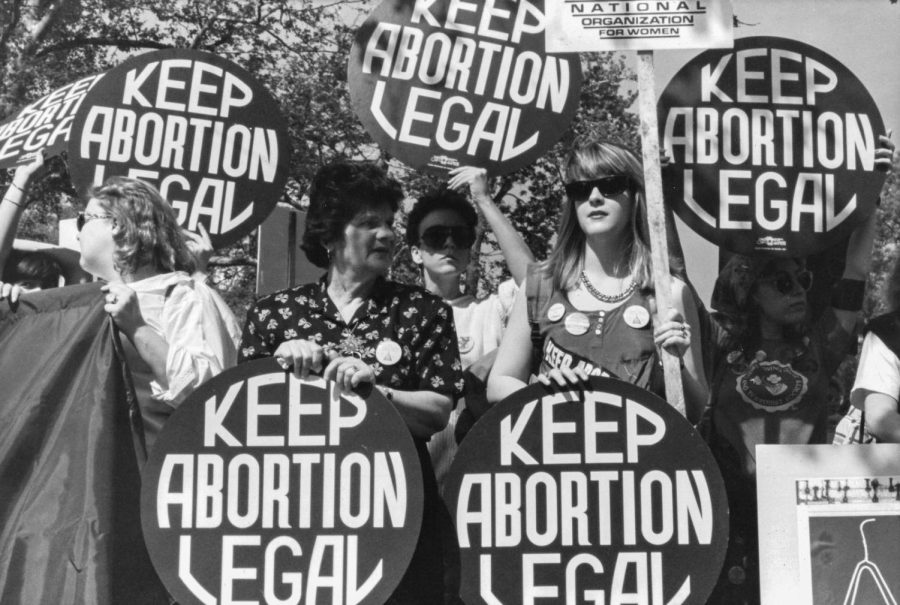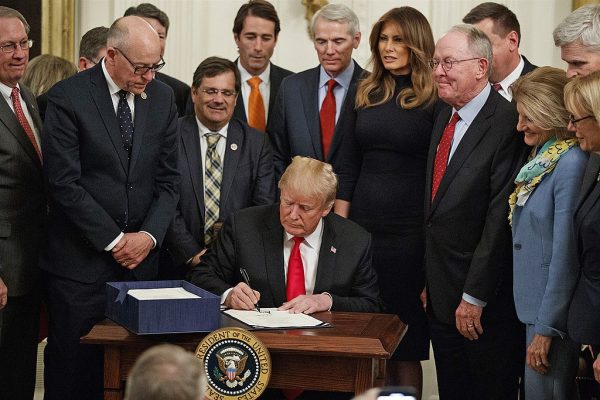Roe v. Wade: How we got here and what is next
February 12, 2022
The landmark Supreme Court ruling of Roe v. Wade (1973) is now, according to several sources including The Guardian, likely to be overturned by the court’s conservative majority as a result of Dobbs v. Jackson Women’s Health Organization. After nearly 50 years of campaigning, lobbying, and confirming anti-abortion justices, conservatives appear to have finally achieved what many of them have sought to do for so long.
“Roe,” as the case has come to be known, has been one of the main points of concern for Americans in regards to the Supreme Court. The landmark precedent established that women have the fundamental right to terminate their pregnancy in the first trimester and that the government could regulate but not ban abortions in the second trimester.
The 1973 ruling resulted in a massive backlash from socially conservative voters. In an uprising, conservatives began to utilize the anti-abortion evangelicals—who were less politically active prior to Roe—as a new voter base in hopes of gaining an anti-abortion majority in the Supreme Court.
In the years following, Republicans would dominate Presidential elections and the Senate. Republicans currently hold strong majorities in small states such as Wyoming, Utah, and Idaho—while the combined population of these states is just a fraction of California’s, each of them enjoys Senate representation equal to that of their giant neighbor.
In the generations after Roe, Republicans and Democrats alike would view the Supreme Court as a more partisan institution—rather than an independent check on the legislative and executive branches. They go back and forth, appointing more partial justices in order to strike down or protect abortion rights.
Conservatives Gain a Majority in 2018
This jockeying culminated in a solid anti-abortion majority in 2018, when Justice Anthony Kennedy, the crucial “swing vote” in the Supreme Court who was supportive of Roe, announced his retirement from the Supreme Court. With a Republican President and Senate majority, the Republicans were poised to finally overturn Roe v. Wade.
After a lengthy nomination process for Brett Kavanaugh, who was accused of sexual assault during the process (a timeline of the nomination process by CNN), the Republicans confirmed Kavanaugh as a Supreme Court Justice, giving them a 5-4 majority in the Supreme Court (which would later become a 6-3 majority).
Soon after, conservative strongholds in the South began to enact limitations on abortion, such as in Georgia, Texas, and Mississippi (whose law is currently being challenged in the Supreme Court). Many speculate that the main reason these states have begun to pass these laws is not that they seek to restrict abortion on the state level. Rather, they hope that the laws will be challenged and work their way up to the Supreme Court, where the law will be upheld, and Roe will have a chance to be overturned.
Why Opposition to Roe Remains So Strong
The court is not expected to deliver a decision until June or July. However, the court is poised to overturn Roe v. Wade—despite only 39% of Americans supporting this and 59% supporting upholding the ruling, according to Pew Research. There are several reasons for such a small minority of Americans having a controlling influence over the subject of abortion.
First, the abortion debate is one that has defined the last few generations of American politics, and the current objectives were set in motion years ago. That is to say, planning by both Republicans and Democrats on policy surrounding Roe was intricately designed decades ago.
Second, evangelical principles and values remain a controlling influence over the Republican party. Republicans to this day promote “family values,” their interpretation including anti-abortion beliefs. Evangelical influence over the Republican Party means that even politicians who are not as adamantly opposed to abortion or are even pro-choice can still be lobbied to support the pro-life agenda.
Within the Republican party, defiance against the party’s abortion policies is seldom tolerated. This has allowed Republicans to appoint ultra-conservative justices that hold views that are not entirely reflective of the country’s overall views on abortion.
Democratic Strategy
Should Roe v. Wade be overturned, Democrats have floated a new policy idea: court expansion. According to the New York Times, since the addition of Amy Coney Barret to the Supreme Court in late 2020, calls for the Democrat-controlled House and Senate to expand the court from a nine-justice court to a 13-justice court have grown. This is similar to what Franklin Roosevelt attempted to do in 1937, as documented by History.com.
At a town hall during his presidential campaign, President Biden was asked about so-called “court packing,” but he did not clearly articulate his dispositions for or against it. This was met with pushback from many conservatives who labeled it a power grab.
Putting aside the partisan imbalance court-packing would create, it would be impractical for Democrats to pursue such a goal. As Biden’s approval ratings fall, it appears probable that the Democrats could lose their majorities as soon as 2022. Should a Republican Congress and President come to power, it is likely that they too will attempt to pack the court.
Even President Biden voiced a similar concern during the election cycle, according to Politico, saying, “The last thing we need to do is turn the Supreme Court into just a political football.” In all likelihood, Democrat leadership won’t entertain the idea too far, no matter how much progressives insist. Republicans would simply portray any attempt by the Democrats to pack the Supreme Court as an attempt to avert democracy, giving them massive political leverage.
Effects of Overturning Roe
Whatever the outcome in the Supreme Court may be, it is likely that abortions will continue to occur in the US. In most countries where abortion is outlawed, they still occur unmonitored..
In Pakistan, for example, abortion is illegal with exceptions in rare circumstances, yet, the country maintains one of the highest abortion rates worldwide. While the statistics are hard to ascertain, in 2002, an estimated 890,000 women in Pakistan had an abortion—197,000 of whom were hospitalized for abortion-related complications. Women without access to safe abortions tend to find other ways to terminate their pregnancies. Often this occurs in potentially fatal ways.
Should the Supreme Court overturn Roe, it is likely the US will experience a surge in unsafe abortions. Further regulation will not prevent many underprivileged women from terminating their pregnancies; rather, they will seek alternative methods.




















